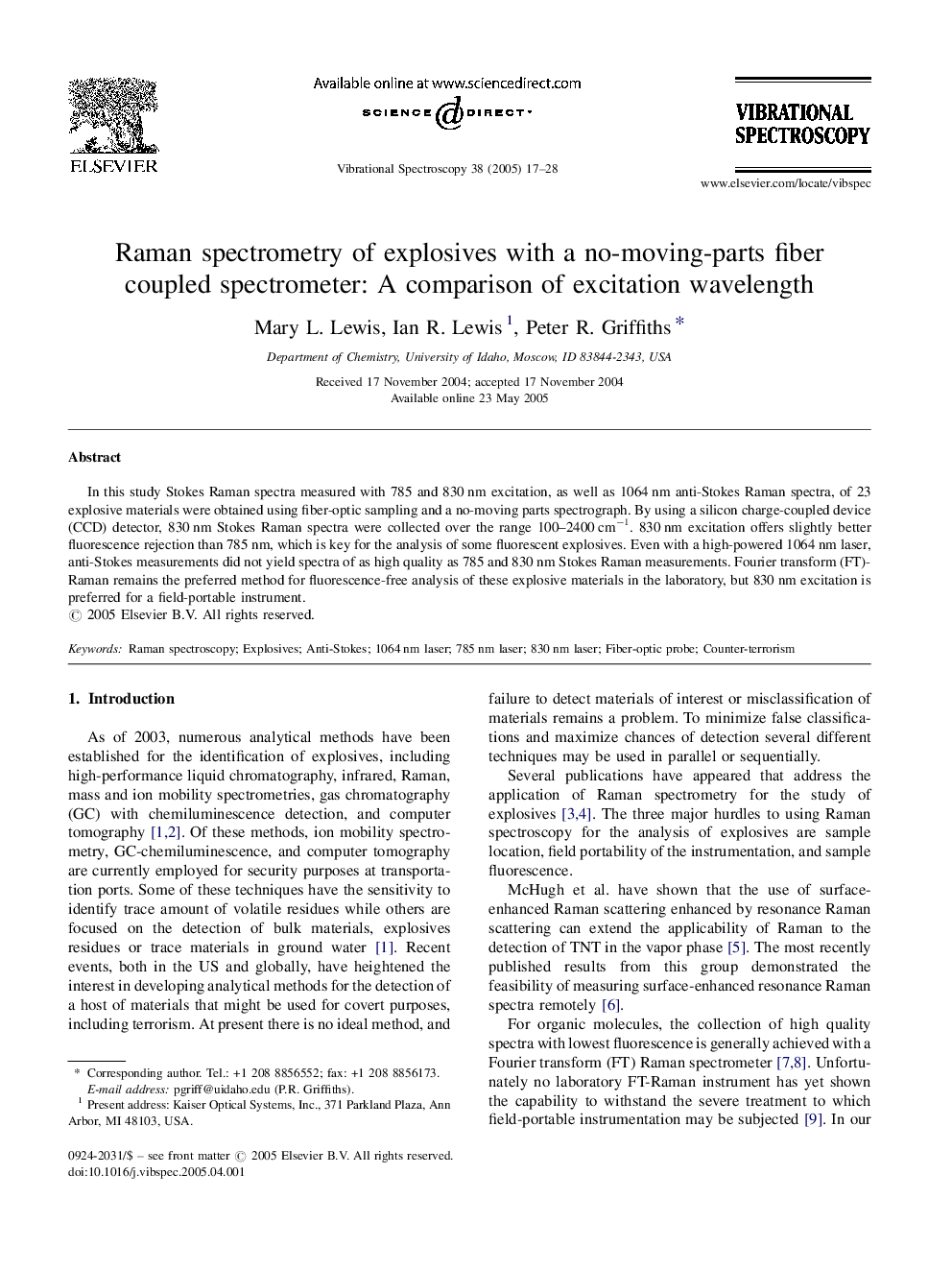| Article ID | Journal | Published Year | Pages | File Type |
|---|---|---|---|---|
| 9757449 | Vibrational Spectroscopy | 2005 | 12 Pages |
Abstract
In this study Stokes Raman spectra measured with 785 and 830Â nm excitation, as well as 1064Â nm anti-Stokes Raman spectra, of 23 explosive materials were obtained using fiber-optic sampling and a no-moving parts spectrograph. By using a silicon charge-coupled device (CCD) detector, 830Â nm Stokes Raman spectra were collected over the range 100-2400Â cmâ1. 830Â nm excitation offers slightly better fluorescence rejection than 785Â nm, which is key for the analysis of some fluorescent explosives. Even with a high-powered 1064Â nm laser, anti-Stokes measurements did not yield spectra of as high quality as 785 and 830Â nm Stokes Raman measurements. Fourier transform (FT)-Raman remains the preferred method for fluorescence-free analysis of these explosive materials in the laboratory, but 830Â nm excitation is preferred for a field-portable instrument.
Related Topics
Physical Sciences and Engineering
Chemistry
Analytical Chemistry
Authors
Mary L. Lewis, Ian R. Lewis, Peter R. Griffiths,
